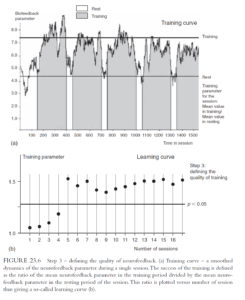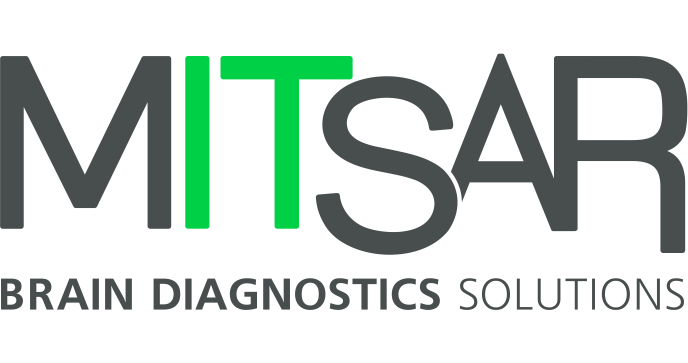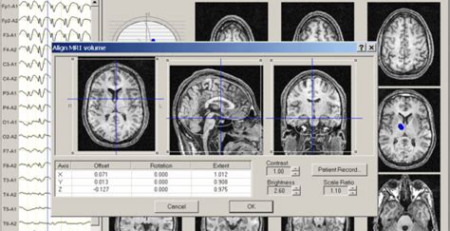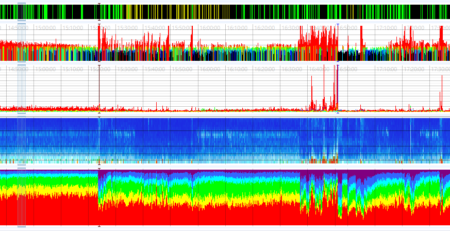Tracking Progress in Neurofeedback (EEG-based biofeedback) Therapy
Evaluating progress during a neurofeedback EEG therapy course requires a comprehensive approach that goes beyond merely analyzing absolute EEG spectral values. Below are essential considerations for effectively assessing outcomes:
- Test-Retest Reliability of EEG Spectra
EEG power spectra are inherently variable and influenced by factors such as mental state, fatigue, and environmental conditions. Due to this variability, relying solely on absolute spectral values as indicators of progress is not reliable. Instead, clinicians should focus on patterns of change and trends across multiple sessions. Averaging data over time can help improve reliability and reveal meaningful progress in self-regulation.
- Neurofeedback as a Self-Regulation Process
Neurofeedback is fundamentally about learning self-regulation. The primary goal is not to permanently change resting-state EEG spectral values but to empower individuals to consciously control their brain rhythms when needed. Participants learn to voluntarily increase or decrease specific EEG frequencies in response to real-time feedback, developing mental flexibility and adaptability. One of the key outcomes of this process is improved functional brain flexibility, which can be transferred to real-life situations beyond the training sessions.

- Assessing Success Through Training Versus Rest Differences
A crucial metric for evaluating progress is the difference in the trained parameter between periods of rest and active training. Clinicians can assess whether the participant can effectively modulate the targeted EEG rhythm, how quickly they reach the target (latency), and how stable their modulation is (variability). Improvements in these factors over time provide a multidimensional understanding of progress.
- Clinical and Quality-of-Life Outcomes
The ultimate measure of success lies in clinical improvements and enhancements in the patient’s quality of life. These may include reductions in symptoms such as anxiety, ADHD, or sleep disturbances and improvements in cognitive functions and emotional stability. It is essential to use validated questionnaires and assessment scales to objectively evaluate subjective changes. Substantial improvements may require a significant number of sessions, as the pace of progress varies based on individual factors such as engagement and responsiveness to training.
- Quantitative Assessment and Reporting in EEGStudio
Importantly, neurofeedback training provides quantitative metrics to assess session success. These objective evaluations are included in comprehensive training reports that help track and visualize progress over time. Metrics such as response speed, accuracy, and stability during training can be valuable indicators of improvement. Automated graphs and visual data representations can help maintain participant motivation by making their progress tangible. Our specialists are available to assist in interpreting these reports and guide users on how to effectively utilize this functionality for monitoring and optimizing therapy outcomes.
- The Role of Feedback Beyond Data
Feedback is not just a technical tool but also a psychological one. Understanding their progress and seeing measurable improvements can significantly enhance a participant’s motivation and confidence in the therapy process, fostering a positive cycle of engagement and self-regulation improvement.
In conclusion, a comprehensive approach—combining self-regulation assessment, clinical improvements, quantitative analysis, and effective communication of progress—provides the most accurate and meaningful evaluation of neurofeedback therapy success.






Leave a Reply